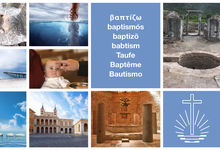The sacraments (48): The double Spirit
From a spontaneous flash of inspiration to the regulating apostolic hand: this is how the Catholic Apostolic Church developed its sealing. The theological foundation only developed over time—and not always uniformly.

Baptism constitutes the full rebirth out of water and Spirit. And it makes believers into children of God. This was the view of the most significant apostolic creed of modern times, The Great Testimony of the English Apostles, in 1837.
Why then was there a need for sealing, which was introduced in 1847? The answer can be found in the Catechism of the Catholic Apostolic Church—or not. For there is no mention of “sealing”, but of the “laying on of apostle’s hands”.
There was more
With this act, believers received the gift of the Holy Spirit. Through it they were “established and confirmed, sealed and anointed”. This is still very similar to the episcopal confirmation in the Catholic or Anglican Church.
However, the apostolic laying on of hands had a greater effect on the believers: “The Holy Spirit divides His gifts to each one severally, as He will.” These gifts were: knowledge, faith, gifts of healing, working of miracles, prophecy, discerning of spirits, diverse kinds of tongues, and their interpretation.
For the benefit of all
“All these worketh that one and the self-same Spirit, dividing to every man severally as He will.” So these gifts were distributed to all the believers, albeit individually, but with a global objective: it was to be “for the profit of all”. In other words, the laying on of hands endows all members of the church with the very gifts of the Holy Spirit they need for their respective service.
Mind you, according to Catholic Apostolic understanding, both baptism and sealing conferred the gift of the Holy Spirit: baptism conveyed the spirit of life, sealing bestowed the spirit of power.
Things moved on
In many writings, Apostles and theologians continued to develop these fundamentals further—sometimes emphasising different points. The first problem was already the name. Some used “sealing” synonymously with “laying on of hands”. Others saw the former as only a partial aspect of the latter.
And this continued with the actual rite: to the apostolic laying on of hands, which was received kneeling at the altar, was added the anointing of the forehead with oil. And it did not stop with the significance it was accorded. From an indecisive “a sacrament or rite”, as it was formulated in the Catechism, things developed in the direction of sacrament, though not quite on a par with the principal sacraments of Baptism and the Eucharist.
It won’t work without it
What was clear, however, was the common doctrinal trend in terms of what was necessary for salvation: according to this, sealing was necessary for the completion of baptism; it represented the guarantee for future glory, enabled participation in the first resurrection, and thus saved the believer from the great tribulation. Without it the Church cannot be prepared for the return of the Lord, the author of the Catechism formulated later said in his explanations.
Two conditions were required for sealing: the recipient, regardless of his or her denomination, had to be baptised and—in accordance with Mosaic Law—had to be at least 20 years old. Children were not sealed, unlike in the New Apostolic Church. How that developed will be the subject of the next part.
Photo: sborisov - stock.adobe.com














